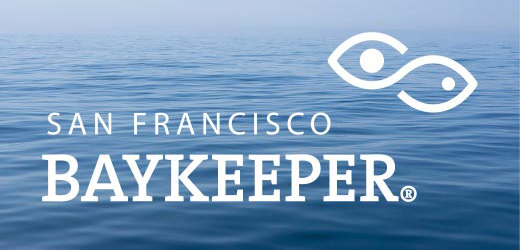Baykeeper recently filed a lawsuit to stop methods of dredging in San Francisco Bay that contribute to shoreline erosion and harm endangered fish. Our lawsuit challenges the Regional Water Quality Control Board’s approval of the next decade of dredging of San Francisco Bay ship channels by the U.S. Army Corps of Engineers.
“Dredging of ship channels in San Francisco Bay is necessary, but it needs to be done in a way that doesn’t harm endangered fish, the Bay, or the coast,” said George Torgun, Baykeeper Managing Attorney.
San Francisco Bay is a dynamic and shallow water body that rapidly fills shipping lanes, marinas and harbors with sand, silt and mud. Each year, three to four million cubic yards of sand and mud—or enough to fill the Transamerica Building ten times—is removed from the Bay floor.
The Army Corps of Engineers does approximately 70% of this dredging, to keep shipping channels and harbors deep enough to accommodate large ocean-going ships traveling to and from ports and shipping terminals around the Bay and farther up the Delta.
Our lawsuit’s goals include compelling the Regional Board to require improvements in dredging to protect endangered species of fish. One dredging method frequently used by the Army Corps, hydraulic hopper suction dredging, should be immediately phased out.
Hydraulic dredging kills large numbers of two Bay fish species that are on the brink of extinction, delta smelt and longfin smelt. According to the Army Corps’ own analysis, in 2011, their dredging killed up to 29% of the delta smelt population and 8% of the longfin smelt population. Using another dredging method, where clamshell buckets scoop up mud and sand the way a backhoe would dig a pit, is safer for fish.
Baykeeper’s lawsuit is also aimed at requiring sand and mud dredged from the Bay to be used to restore wetlands and protect shorelines from sea level rise. In addition, whenever possible, dredged materials should not be dumped deep in the ocean—an outdated and wasteful disposal method.
Over the last decade, scientists from the United Stated Geological Survey and elsewhere have correlated Bay dredging and sand mining with coastal erosion at Ocean Beach and other areas just outside of the Golden Gate, which are experiencing the fastest rates of erosion on the West Coast.
Scientists have also found that dredging and sand mining are removing more sediment each year from the Bay than is entering from the Delta and all local rivers and creeks. If this sand and mud instead remains in the Bay, it can help maintain existing wetlands and restore expansive salt ponds and other lands that have been opened to tidal action in recent years. By dumping clean sediment far off in the open ocean, our region also loses the ability to build up natural flood defenses and protect wetlands and communities from sea level rise.
In addition to our lawsuit to require improved dredging methods in San Francisco Bay, Baykeeper is working to reduce sand mining in the Bay, which also contributes to erosion of Ocean Beach and the Bay.


